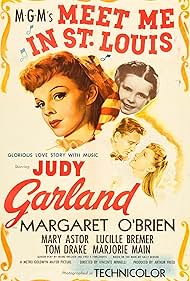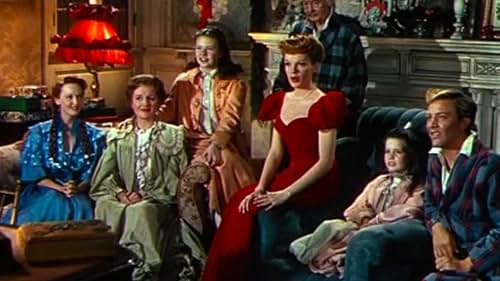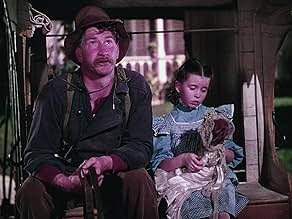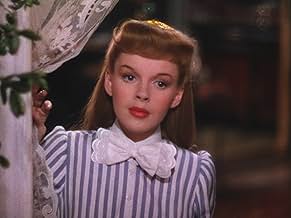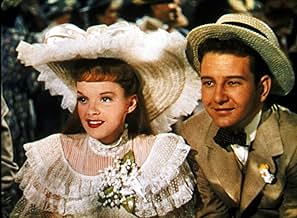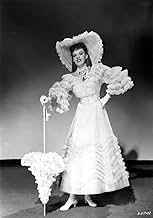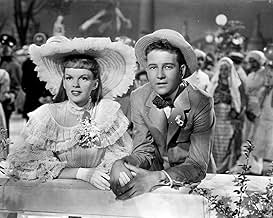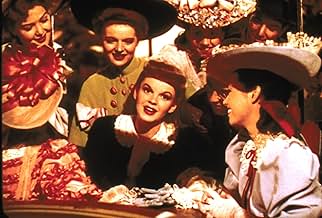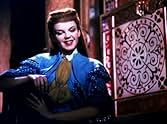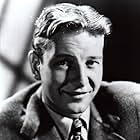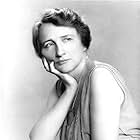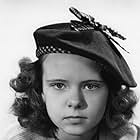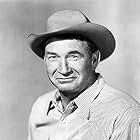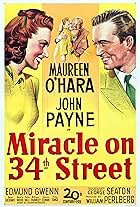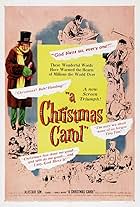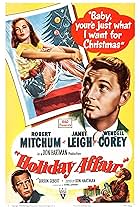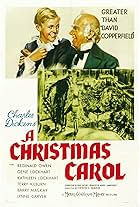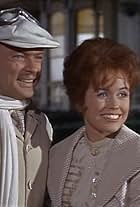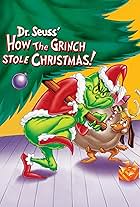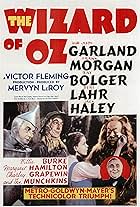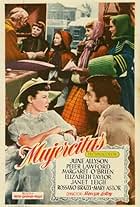CALIFICACIÓN DE IMDb
7.5/10
29 k
TU CALIFICACIÓN
En el año previo a la Feria Mundial de St. Louis de 1904, las cuatro hijas de Smith aprenden lecciones de vida y amor, incluso mientras se preparan para un traslado a Nueva York.En el año previo a la Feria Mundial de St. Louis de 1904, las cuatro hijas de Smith aprenden lecciones de vida y amor, incluso mientras se preparan para un traslado a Nueva York.En el año previo a la Feria Mundial de St. Louis de 1904, las cuatro hijas de Smith aprenden lecciones de vida y amor, incluso mientras se preparan para un traslado a Nueva York.
- Nominado a 4 premios Óscar
- 7 premios ganados y 7 nominaciones en total
Sidney Barnes
- Hugo Borvis
- (sin créditos)
Tom Batten
- Trolley Song Performer
- (sin créditos)
Judi Blacque
- Girl on Trolley
- (sin créditos)
Victor Cox
- A Driver
- (sin créditos)
Argumento
¿Sabías que…?
- TriviaThis film was a box-office smash, grossing more money than any prior MGM release in 20 years with the exception of David O. Selznick's Lo que el viento se llevó (1939).
- ErroresWhen Esther and Tootie perform "Under the Bamboo Tree", Tootie's bedroom slippers are pink at the beginning of the number but change to blue in the "cake walk" finale.
- Citas
Rose Smith: Money. I hate, loathe, despise and abominate money.
Mr. Alonzo Smith: You also spend it.
- Versiones alternativasJudy Garland recorded a Rodgers and Hammerstein song called "Boys and Girls Like You and Me" for the soundtrack. A scene was filmed with Garland singing the song to Tom Drake after "The Trolley Song" sequence, but the scene was cut after the first preview. The footage no longer remains, but the recording does.
- ConexionesEdited into Hollywood: The Dream Factory (1972)
Opinión destacada
"The day was bright, The air was sweet, The smell of honeysuckle almost knocked you off your feet ..." This is unashamed nostalgia for an idealised America, dating back to an age of innocence before the two World Wars.
It is 1903, and the city of St. Louis is ablaze with excitement as it prepares to host the World's Fair. Here in the geographic heart of the USA, the very pleasant Smith family lives in a very pleasant suburb of the very pleasant St. Louis. We watch the Smiths through the seasons and into Spring 1904 as they fall in love, dress up for Hallowe'en, bottle their home-made ketchup and .... well, ride the trolley.
This is a world of tranquillity where nothing can threaten the homely complacency of Middle America. The evening meal is always a wholesome family gathering, the month of July is always sunny, big brothers are always handsome Princeton freshmen and the iceman's mare knows the neighbourhood so well that she stops at each home on her round without needing to be told. The only shadow which falls across the Smiths' domestic bliss comes when Alonzo, the paterfamilias, proposes to move the household to New York. However, Alonzo soon realises what a terrible mistake it would be to tear his wife and daughters away from their beloved MidWest: he relents, and family harmony is restored.
This heartwarming, exuberant musical is one of the very best ever made, and MGM knew exactly what it was doing in terms of box office success. The film was calculated to cash in on the zeitgeist of 1944, the year in which vast American armies were sent across to Europe and the war in the Pacific turned decisively in America's favour. Millions of young American men found themselves far from home in what was certain to be the last Christmas of the War, and millions of families back home missed them terribly: " Some day soon we all will be together, If the fates allow. Until then, we'll have to muddle through somehow ..."
In this idealised America, everyone is prosperous, everyone conducts himself like a good citizen should, old folks are cheerful, healthy and alert, domestic servants feign grumpiness but actually adore their masters, and teenage girls are flirtatious but impeccably proper. There are strong American folk-resonances in the homespun wisdom of the family elders, the strong, straight young adults and the 'down home' hearthside gatherings and dances. It could be argued that the film invokes an America that has never in fact existed. This maybe so, but the Perfect America which we experience here exerts an emotional pull far stronger than any real place could command.
Vincente Minnelli directed the movie with panache. There are many subtle but sure touches - for example, two short scenes which establish the proposition that the family's happiness is inextricably linked to St. Louis. Alonzo announces the move to New York, and with clever choreography Minnelli turns him into a pariah in his own living-room. Esther and Tootie gaze at the snowmen which they will have to abandon in the yard, and we know without any dialogue to help us that the eastward migration isn't going to happen. With similar cinematic economy, Minnelli shows us the happy commotion around the Christmas tree without allowing it to distract our attention from Alonzo and Anna, whose wordless reconciliation sets the seal on the plot. This is directing of rare skill.
In films of the 1960's and 70's a stock device was used: a sepia-tinted photograph would 'come to life' with colour and motion, to show that the scene was laid in the past. Minnelli employs the trick elegantly in this film, and I am not aware of any example which pre-dates this one.
This is a 'formula' movie, but its ingredients are so fine and they are combined with such marvellous skill that the whole eclipses the parts. Among the elements which contribute to the project's success are the songs - and the film contains three classics: "The Trolley Song", "Have Yourself A Merry Little Christmas" and (of course) "Meet Me In St. Louis".
Judy Garland was 22 years old when she made this film (though she easily passes for a 17-year-old) and it was this movie which cemented her relationship with Minnelli. They married one year later and Liza was born in March 1946.
Predictably enough, the film has a happy ending. The teenage girls Esther and Rose are paired off, and the Smiths get to visit the World's Fair as one big happy family. As they look for the restaurant (once again, a meal signifies domestic harmony) they are distracted by the lighting-up of the city, a filmic metaphor for the approaching end of World War Two. The sisters are filled with awe at America's technological ascendancy, and that such miracles can be achieved by such folksy, simple people - "Right here where we live: right here in St. Louis!"
It is 1903, and the city of St. Louis is ablaze with excitement as it prepares to host the World's Fair. Here in the geographic heart of the USA, the very pleasant Smith family lives in a very pleasant suburb of the very pleasant St. Louis. We watch the Smiths through the seasons and into Spring 1904 as they fall in love, dress up for Hallowe'en, bottle their home-made ketchup and .... well, ride the trolley.
This is a world of tranquillity where nothing can threaten the homely complacency of Middle America. The evening meal is always a wholesome family gathering, the month of July is always sunny, big brothers are always handsome Princeton freshmen and the iceman's mare knows the neighbourhood so well that she stops at each home on her round without needing to be told. The only shadow which falls across the Smiths' domestic bliss comes when Alonzo, the paterfamilias, proposes to move the household to New York. However, Alonzo soon realises what a terrible mistake it would be to tear his wife and daughters away from their beloved MidWest: he relents, and family harmony is restored.
This heartwarming, exuberant musical is one of the very best ever made, and MGM knew exactly what it was doing in terms of box office success. The film was calculated to cash in on the zeitgeist of 1944, the year in which vast American armies were sent across to Europe and the war in the Pacific turned decisively in America's favour. Millions of young American men found themselves far from home in what was certain to be the last Christmas of the War, and millions of families back home missed them terribly: " Some day soon we all will be together, If the fates allow. Until then, we'll have to muddle through somehow ..."
In this idealised America, everyone is prosperous, everyone conducts himself like a good citizen should, old folks are cheerful, healthy and alert, domestic servants feign grumpiness but actually adore their masters, and teenage girls are flirtatious but impeccably proper. There are strong American folk-resonances in the homespun wisdom of the family elders, the strong, straight young adults and the 'down home' hearthside gatherings and dances. It could be argued that the film invokes an America that has never in fact existed. This maybe so, but the Perfect America which we experience here exerts an emotional pull far stronger than any real place could command.
Vincente Minnelli directed the movie with panache. There are many subtle but sure touches - for example, two short scenes which establish the proposition that the family's happiness is inextricably linked to St. Louis. Alonzo announces the move to New York, and with clever choreography Minnelli turns him into a pariah in his own living-room. Esther and Tootie gaze at the snowmen which they will have to abandon in the yard, and we know without any dialogue to help us that the eastward migration isn't going to happen. With similar cinematic economy, Minnelli shows us the happy commotion around the Christmas tree without allowing it to distract our attention from Alonzo and Anna, whose wordless reconciliation sets the seal on the plot. This is directing of rare skill.
In films of the 1960's and 70's a stock device was used: a sepia-tinted photograph would 'come to life' with colour and motion, to show that the scene was laid in the past. Minnelli employs the trick elegantly in this film, and I am not aware of any example which pre-dates this one.
This is a 'formula' movie, but its ingredients are so fine and they are combined with such marvellous skill that the whole eclipses the parts. Among the elements which contribute to the project's success are the songs - and the film contains three classics: "The Trolley Song", "Have Yourself A Merry Little Christmas" and (of course) "Meet Me In St. Louis".
Judy Garland was 22 years old when she made this film (though she easily passes for a 17-year-old) and it was this movie which cemented her relationship with Minnelli. They married one year later and Liza was born in March 1946.
Predictably enough, the film has a happy ending. The teenage girls Esther and Rose are paired off, and the Smiths get to visit the World's Fair as one big happy family. As they look for the restaurant (once again, a meal signifies domestic harmony) they are distracted by the lighting-up of the city, a filmic metaphor for the approaching end of World War Two. The sisters are filled with awe at America's technological ascendancy, and that such miracles can be achieved by such folksy, simple people - "Right here where we live: right here in St. Louis!"
- stryker-5
- 17 dic 1998
- Enlace permanente
Selecciones populares
Inicia sesión para calificar y agrega a la lista de videos para obtener recomendaciones personalizadas
Detalles
- Fecha de lanzamiento
- País de origen
- Sitio oficial
- Idioma
- También se conoce como
- Meet Me in St. Louis
- Locaciones de filmación
- Productora
- Ver más créditos de la compañía en IMDbPro
Taquilla
- Presupuesto
- USD 1,700,000 (estimado)
- Total en EE. UU. y Canadá
- USD 415,008
- Fin de semana de estreno en EE. UU. y Canadá
- USD 225,684
- 8 dic 2019
- Total a nivel mundial
- USD 502,778
- Tiempo de ejecución1 hora 53 minutos
- Color
- Relación de aspecto
- 1.37 : 1
Contribuir a esta página
Sugiere una edición o agrega el contenido que falta

Principales brechas de datos
By what name was La rueda de la fortuna (1944) officially released in India in English?
Responda